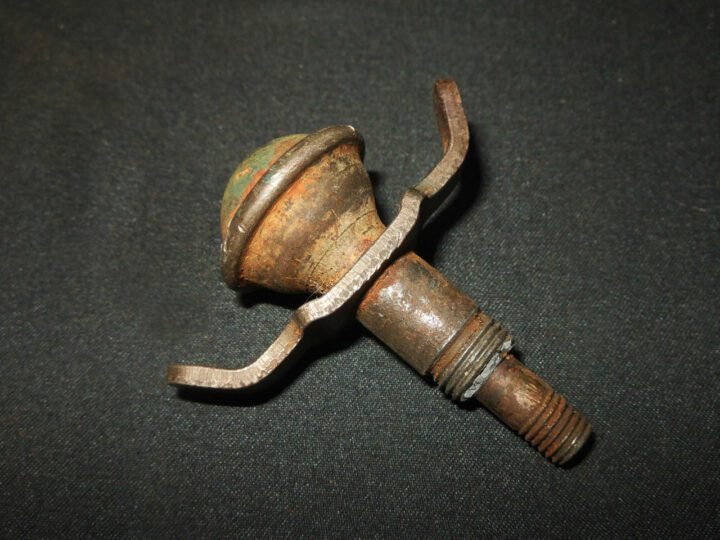
1 / 5
WW2 German Wehrmacht Brennzünder 39 – BZE39 IGNITION FUSE – M43 & M39 GRENADES – EXCELLENT!
Available
$59.99
—
Description
You are bidding on a VERY NICE and 100% INERT WW2 German Wehrmacht Brennzünder 39 (BZE39) Ignition Fuse! This was used in conjunction with the M39 Egg Grenade, and late-war M43 Stick Grenade.The Model 39 'Eihandgranate', M39 or Eierhandgranate 39 ('egg hand grenade') was a German fragmentation hand grenade introduced in 1939 and produced until the end of World War II. It used the same fuse assembly (the BZE 39) as the Model 43 Stielhandgranate ('Stick Grenade'), which was screwed into the top of the sheet-metal body.To activate, the dome-shaped cap was unscrewed and pulled with a coiled pull-cord that is pulled before throwing. The color of the cap indicated the burning time of the type of fuze fitted. Typically, a delay of around 4 seconds was used.If it was to be used as a fixed booby-trap then an instantaneous or 1 second fuse would be fitted. Sometimes, this style of grenade would be discarded in plain view for the enemy to use, particularly on the Eastern Front and in the Western Front. They were used in France as part of Erwin Rommel's 'asparagus'. Obstacles, such as wooden poles, were used to hinder airborne landings, which could tear the wings of gliders and also kill the soldiers inside as these poles were connected with wires to either these grenades or S-mines (Bouncing Betty) against paratroopers. Later in Italy they would also be used as booby traps to slow down Allied advances on the Italian peninsula, in ambushes or in street fighting and as traps for the Italian Partisans when they raided German supplies and weapon caches. Another type of trap was to wire a short-fuse grenade to a door-frame in an abandoned building with the pull-cord attached to the door. When the door was breached by opposing troops the grenade would detonate right next to the enemy. German soldiers were easily confused with grenades that had blue color fuse caps because they could have had a 4.5 second delay or zero second delay.In order to prevent this, a red dot or a red 'X' was put on the blue fuse cap or a red horizontal stripe was painted on the body of the grenade.The offensive (high explosive) version of the grenade used a small Donarit filling which was considered extremely ineffective in comparison to the standard stick grenade models: large amounts of these grenades would be thrown in a short amount of time or at once for the desired effect.The defensive (fragmentation) version of the grenade had a fragmentation sleeve wrapped around the exterior of the grenade, which would turn into high speed shrapnel when the grenade exploded giving it a longer range and greater damage ability to the enemy.Made of steel, this items is in EXCELLENT relic condition. It is very solid, and still retains it's original blue paint on the top! Minimal rust or corrosion, and could clean up quite nicely. Dated 1943 at the top, but is a bit hard to read. Can be disassembled quite easily. Overall a VERY NICE example, PERFECT item for any collection or display!


